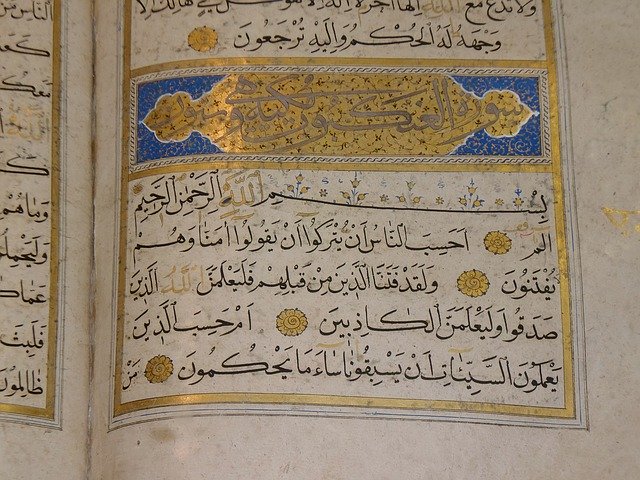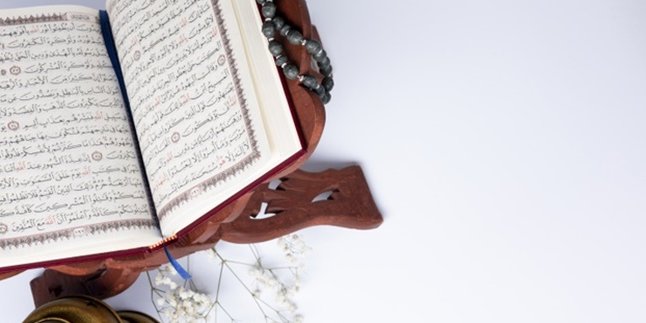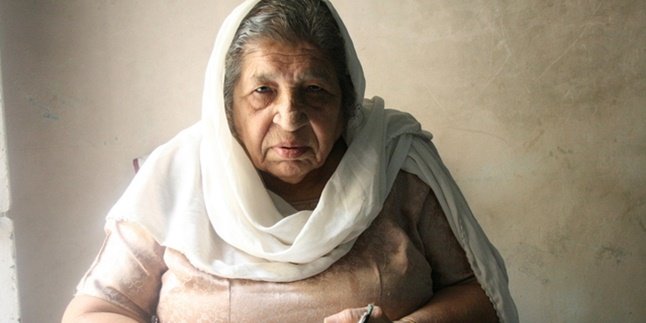Kapanlagi.com - Huruf hijaiyah and the correct way to read it is important for Muslims to know. Because, huruf hijaiyah is a script used in the Quran. However, the Quran is a holy book that contains guidance. In the Quran, there is also a short letter that is read during prayer.
In addition, in the month of Ramadan, reading the Quran is also one of the most recommended practices to be done in Ramadan. The reward for reading the Quran during fasting in Ramadan will be multiplied. Those are some reasons why it is important to know huruf hijaiyah and the correct way to read it. The correct way to read huruf hijaiyah will also enhance our recitation practice.
By the way, in this Ramadan month, KapanLagi has an event that is quite important and too good to be missed. This event is guaranteed to make your weekend even better.
---------------------------------
Ramadan News: Want to Break Fast with Artists?
Join KapanLagi Buka Bareng, an online iftar event with 1000 people, artists, and live music. How? Register first here, and fill in your personal data. Everything is FREE. Read the complete guide here.
----------------------------------
Hijaiyah letters are alphabet letters in the Arabic language. Unlike alphabet letters used in various other languages, Hijaiyah letters are written from right to left. Hijaiyah letters consist of 29 letters in total, with sounds that may sound somewhat similar to each other for some laypeople.
That's why it is advisable for Muslims to learn the Hijaiyah letters and the correct way to pronounce them. Learning to read the Hijaiyah letters correctly is also said to be rewarding, just like reciting the Quran.
Here are the Hijaiyah letters and their sounds.
1. 29 Huruf Hijaiyah and How to Read Them

(credit: merdeka.com)
2. Getting to Know Punctuation Marks

(credit: pixabay)
In addition to the Arabic alphabet, in order to read the Quran we also need to be able to read punctuation marks. These punctuation marks will allow the Arabic letters to be read with the accompanying sound of vowels (a, i, u, e, o). In the Arabic language, punctuation marks are represented in the form of marks called harakat. Harakat serve to determine the pronunciation of words and sentences in the Quran.
Here are some harakat in the Arabic alphabet.
1) Fathah
In the Quran, the fathah mark or harakat is marked by a horizontal line above the Arabic letter. The fathah mark represents the sound 'a'. For example, if there is the letter 'ba' with a fathah mark, it means that the letter is pronounced as 'ba'.
As a note, if a letter with a fathah mark is followed by a silent Alif letter, then the sound 'a' is pronounced long.
2) Kasrah
The next punctuation mark or harakat is kasrah. Kasrah is also in the form of a horizontal line, but it is located below the Arabic letter. If fathah represents the sound of a, then kasrah represents the sound of i. So if the letter ba' is given kasrah, it will be read as bi.
A letter with kasrah diacritic, when combined with a letter ya mati or sukun, represents the long i phoneme.
3) Dammah
Dammah diacritic looks similar to the letter waw, but smaller. This diacritic is placed above the letter hijaiyah. Dammah represents the sound of u. For example, when the letter ba is given dammah, it will be read as bu.
If a hijaiyah letter with dammah is followed by a waw letter with sukun or mati, the sound of u will be read as long.
4) Sukun
Sukun diacritic is a small circle placed above the letter hijaiyah. Sukun represents the death of a letter. For example, the word mad. This word consists of two letters, namely the letter mim with fathah diacritic, followed by the letter dal with sukun diacritic. Because it has sukun diacritic, only the consonant part of the letter dal is pronounced as 'd'.
3. Understanding Recitation Rules
In the recitation of the Quran, there is something called recitation rules or tajweed. Tajweed is the knowledge of Quranic recitation that is useful for knowing the correct pronunciation of a word or sentence in the Quran. Tajweed is marked by various rules, such as the meeting of certain vowelized Arabic letters with other Arabic letters.
There are various rules or methods of recitation in tajweed, such as reciting with a nasal sound, reciting softly, and reciting clearly. Some terms in recitation rules or tajweed include Izhar which means clear, idhgam which means reciting with a nasal sound, ikhfa which means reciting softly, and many more.
4. Tips for Learning to Read the Quran

(credit: pixabay)
A few tips for those of you who want to improve your Quran recitation. It is best to do it with sincere intentions and seek the pleasure of Allah SWT. By doing so, everything will become easier.
In addition, you can also learn with the guidance of a teacher, parents, or anyone who has better Quran recitation than you. This way, there will be someone to correct any inaccuracies in your recitation.
So, that's a brief introduction to the Arabic alphabet and some aspects related to pronunciation, recitation rules or Tajweed, and tips for learning to read the Quran. Hopefully, it can be useful in improving your Quran recitation.
Don't forget to register for the KapanLagi Buka Bareng event, so that this weekend's iftar becomes more colorful.
(kpl/psp/gen)
Disclaimer: This translation from Bahasa Indonesia to English has been generated by Artificial Intelligence.















